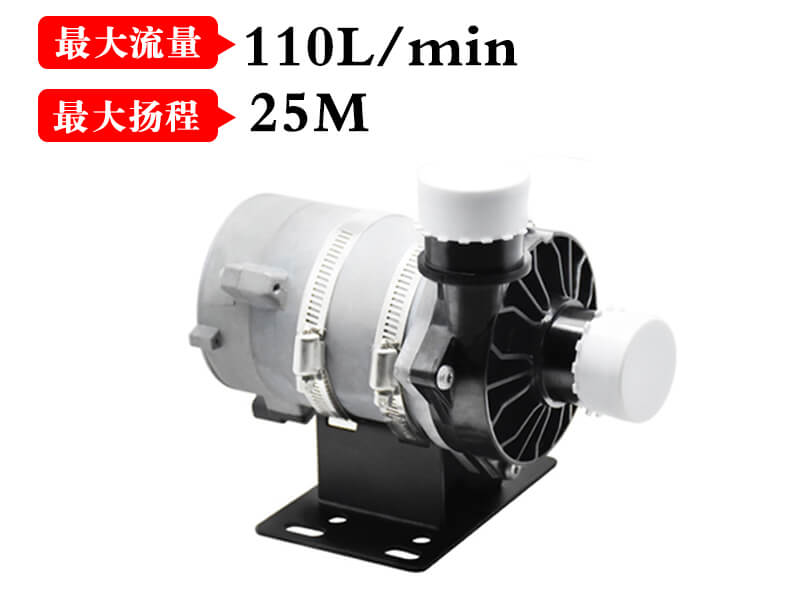As an important component for improving engine efficiency, reducing emissions, battery cooling, and electric motor control cooling, the application of automotive water pumps is becoming increasingly widespread. This article will provide a detailed introduction to the working principle and core components of automotive water pumps.

1. Working principle of automotive electronic water pump
Automotive electronic water pump is a type of water pump controlled by electronic technology. Its core working principle is to adjust the speed of the water pump through an electronic control unit (ECU), thereby controlling the flow and pressure of the coolant to meet the cooling needs of the engine under different operating conditions.
1.1 Brushless DC motor
The core of a car water pump is a brushless DC motor (BLDC), which replaces traditional carbon brushes and commutators with electronic commutators, thereby reducing wear and maintenance requirements. The speed of a brushless motor can be precisely controlled by changing the voltage or current applied to the motor, which allows the car water pump to provide an appropriate amount of coolant flow according to the actual needs of the engine.
1.2 Electronic Control Unit (ECU)
Another key component of a car water pump is the electronic control unit (ECU). ECU is responsible for receiving signals from the engine management system, such as engine temperature, coolant temperature, etc., and calculating the required water pump speed based on these signals. Then, the ECU adjusts the motor speed through pulse width modulation (PWM) signals to achieve precise flow control.
1.3 Temperature Sensor
In order to ensure that the engine operates at the optimal temperature, the car water pump system is usually equipped with multiple temperature sensors. These sensors monitor the temperature of the engine and coolant, and send the data to the ECU. The ECU adjusts the speed of the water pump based on these data to maintain the engine temperature within a safe range.
2. Core components
2.1 Brushless DC motor
Brushless DC motor is the power source of automotive electronic water pump, which consists of two parts: stator and rotor. The stator generates a rotating magnetic field, while the rotor rotates under the action of the magnetic field. Due to the absence of carbon brushes, brushless motors have higher efficiency and longer lifespan.
2.2 Electronic Control Unit (ECU)
ECU is the brain of the automotive electronic water pump, which controls the motor speed based on signals from sensors and preset algorithms. ECU usually integrates multiple protection functions, such as overheating protection, overvoltage protection, etc., to ensure the safe operation of the water pump.
2.3 Temperature Sensor
Temperature sensors are key sensors in automotive water pump systems, responsible for monitoring the temperature of the engine and coolant. These sensors are typically installed in critical parts of the engine, such as the cylinder block, cylinder head, and coolant passages.
2.4 Coolant pump
The coolant pump is the main executing component of the electronic water pump, responsible for delivering coolant from the radiator to various parts of the engine. The design of the pump must ensure sufficient flow and pressure under various operating conditions.
3. Summary
The car water pump improves the thermal efficiency and fuel economy of the engine while reducing emissions by precisely controlling the flow and pressure of the coolant. Its core components include brushless DC motor, electronic control unit, and temperature sensor, which work together to ensure effective cooling of the engine under various operating conditions. With the advancement of technology, the application of electronic water pumps in the automotive field will become increasingly widespread.
Address:No.30, Dapu lndustrial Street, Changping, Dongguan, Guangdong, China
Tel: +86-186 7628 8117